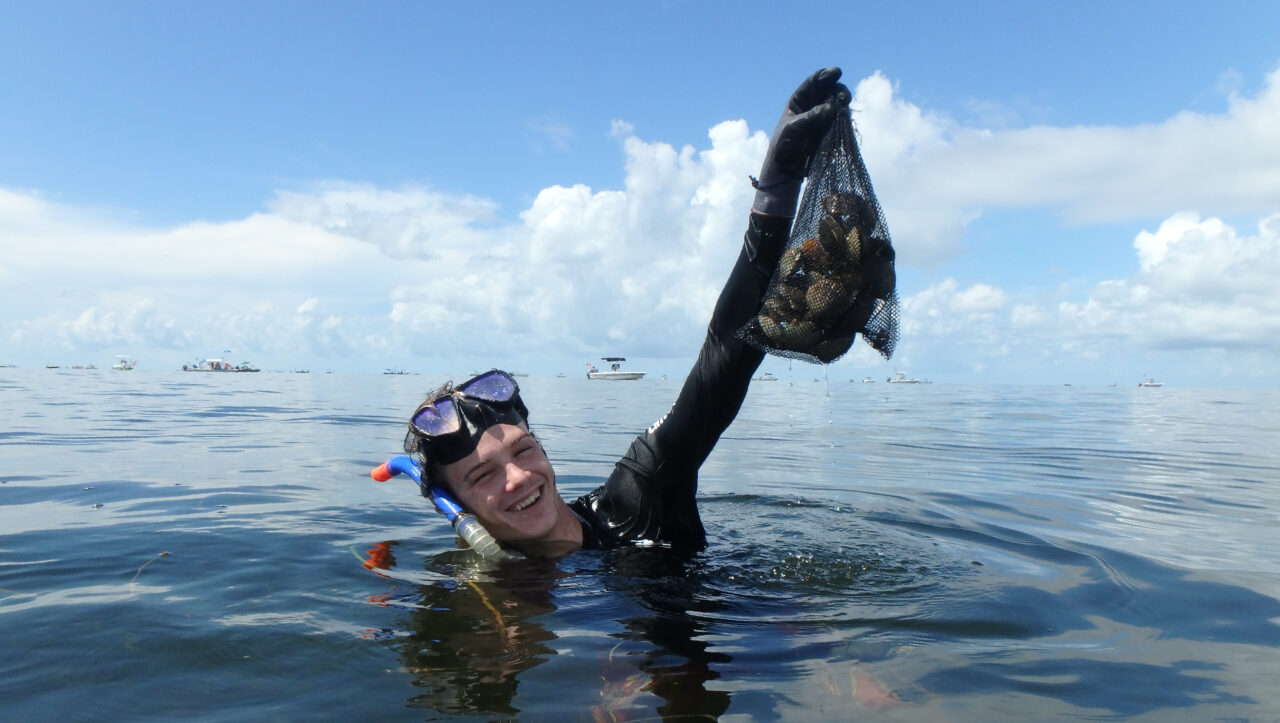
Get your last few dives in while you can — scallop season officially ends next Saturday.
That’s right — the last day to recreationally harvest bay scallops is Friday, Sept. 24. Once these areas close, scallop harvest will not reopen until the 2022 season.
Divers can collect scallops by hand, or less-hearty souls can use a landing or dip net. Scalloping is often referred to an underwater Easter egg hunt, with the critters known for mesmerizing divers with a row of blue eyes that peep out from their shell, alerting divers of their presence.

Recreational bay scalloping is allowed from the Hernando-Pasco County line north to Mexico Beach. Steinhatchee has some of the state’s prime scalloping grounds. The coastal area has rivers flowing into the Gulf stirring up the right mix of fresh and salt water to keep the scallops happy.
Declining bay scallop populations in recent decades mean the activity is closely monitored by the Florida Fish and Wildlife Conservation Commission (FWC), and the state does not allow commercial scallop harvests.
Diminished water quality among other environmental factors caused a decline in Florida’s bay scallop populations, which were once plentiful from West Palm Beach on the Atlantic coast around to Pensacola in the Panhandle. Florida’s bay scallops, in recent years, occur in isolated populations scattered along the west coast. The majority are found in nearshore seagrass beds from Tarpon Springs in Pinellas County to Port St. Joe in Gulf County, according to FWC.
The FWRI is currently implementing a 10-year restoration plan for scallops, including events like a Scallop Rodeo and a Scallop Sitter program. The effort also includes releasing hatchery-reared bay scallops into the wild, redistributing naturally harvested bay scallops and counting bay scallop populations.
Anyone harvesting scallops needs a current Florida recreational saltwater fishing license, unless you are scalloping on a chartered trip. A saltwater fishing license can be obtained online from the FWC.


